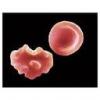Leaderboard
-
in all areas
- All areas
- Records
- Record Comments
- Record Reviews
- Jobs
- Jobs Comments
- Jobs Reviews
- Questions
- Question Comments
- Question Reviews
- Links
- Links Comments
- Files
- File Comments
- File Reviews
- Images
- Image Comments
- Albums
- Album Comments
- Records
- Record Comments
- Events
- Event Comments
- Blog Entries
- Blog Comments
- Topics
- Posts
- Status Updates
- Status Replies
-
Custom Date
-
All time
June 28 2007 - April 25 2024
-
Year
April 25 2023 - April 25 2024
-
Month
March 25 2024 - April 25 2024
-
Week
April 18 2024 - April 25 2024
-
Today
April 25 2024
-
Custom Date
06/30/2014 - 06/30/2014
-
All time
Popular Content
Showing content with the highest reputation on 06/30/2014 in all areas
-
Antibody Titer methodology
Dr. Pepper and 2 others reacted to Abdulhameed Al-Attas for a topic
Titre: The reciprocal of the highest serum dilution that causes macroscopic agglutination when serial dilutions of an antibody are tested against selected red cells. Applications: Prenatal testing Identification of HTLA Comlex Antibody Identification Differentiation of pathological and harmless autoanti- I and Procurement of antisera Quality assurance of reagents. Limitations: Titrations are only semiquantitative estimates of antibody reactivity due to several variables that affect their performance. Three main variables are the technologist, the red cells, and the method. Ways to Minimize Variables: technologist: experienced with proven technique red cells: ideally when titres of samples are to be compared, use fresh red cells (antigens deteriorate on storage) from the same donor (same number of antigenic sites present). If this is not possible, use commercial red cells of the same apparent genotype. method: when sequential samples are examined for change in titre, store samples frozen and run new samples in parallel with the immediately preceding sample. This is the most practical way to control that an increase in titre is real. Prozone Phenomenon: This may cause reactions to be weaker in the first tubes than in higher dilutions and is believed to be caused by an antibody excess in which all antigenic sites are sensitized with antibody leaving none free to form cross-links Significant Difference in Titres: When comparative studies are done, such as in prenatal testing, a difference in titre of at least 2 tubes is required to be considered a significant difference. For example, if the titre changes from 32 to 64, this is not considered to be significant (difference of only 1 tube); however, a change from 32 to 128 would be significant (2 tube difference). These are the important points to know about AntibodyTitration.3 points -
What happened to National Patient Antibody Register (NPAR) in the USA? I was jealous when I read about it. Did it die an unnatural death> Years ago in Oz, we had the Aust Red Cross with an antibody register, but I don't think that all Abs were reported to it. Lots of people have been pushing for it here in Ireland, Pushing hard - but nobody (with the money control) moving. Let's just have a few more DHTRs due to Fya!!! Cheers Eoin1 point
-
I have used all of these techniques. It must be time to retire! "And do you remember Folin-Wu tubes, colloidal golds, protein-free filtrates, changing dialyzer membranes on 2 channel autoanalyzers, leukocyte reduced cells by inverted centrifugation," Fortunately I wasn't around for these. the fall of Rome, the discovery of fire and the other items that may mark us as ancient and should be retired like that guy's cell washer in another thread?"1 point
-
When I was deployed to Iraq we had a handcrank centrifuge.1 point
-

Glass Tiles/Ceramic Tiles
jayinsat reacted to Malcolm Needs for a topic
Careful Anna; I've used it!!!!!!!!!!!!!!!!!!!!!!!!!1 point -
Unless you are working in a country where resources are extremely difficult to come by and/or you don't always have an electricity supply, then why are you using technology that went out of date before most of the people who read this site were even born?1 point
-

Ruling out Kell with Heterozygous cells?
EDibble reacted to Malcolm Needs for a topic
Other things are that "Cellano" was actually "Nocella", "Lutheran" was actually "Lutteran", the first antibody/antigen discovered in the Kell Blood Group System was anti-Kpc/Kp©, so the system should be called Levay, and the first antibody/antigen discovered in the Diego Blood Group System was anti-Wra/Wr(a), so that system should be called Wright!!!!!!!!!!!!!!!!!!!!!!!!1 point -

Ruling out Kell with Heterozygous cells?
tricore reacted to Mabel Adams for a topic
I think K2 is a mountain.1 point -

Ruling out Kell with Heterozygous cells?
Abdulhameed Al-Attas reacted to Malcolm Needs for a topic
You are going to HATE me David, but those are the genes - and should be in italics!!!!!!!!!!!1 point -
To take this one step further, with regards to Mabel's post, I am curious if the folks that allow 3 cells with heterozygous expression to rule out, do you use this logic for all antibodies or just to rule out anti-K. I was never taught that it was OK to rule out using cells with heterozygous expression if you could find a cell of homozygous expression. Anti-K is frequently an example of this as is anti-E in the presence of anti-D and anti-C. The previous blood bank supervisor in our blood bank allowed rule outs using 3 cells of heterozygous expression but I prefer not to, except in the aforementioned cases.1 point
-
We have a microwave too. We also convert our FFP to thawed plasma, so we keep several units (A's and O's) thawed and ready for use.1 point
-
Yes we have had a microwave plasma thawer for a few years and we LOVE IT. Thaws in about 6-7 minutes, depending on the size of the unit. Couple limitations: Can't thaw cryo in it: not FDA approved for cryo Can't thaw the long, folded FFP units in there, they don't fit in the holder. It's expensive...but totally worth it in my opinion. We have a Helmer water bath unit as well for the cryo and folded FFP units.1 point
-
Aren't you over complicating this? If your annual dosemitry and timer calibrations are up to snuff, you already know that the "correct dose" is being delivered by the irradiator. What you want to do is validate, upon receipt, that each new lot number is functioning as expected. There is usually an indicator shipped with each box/lot - first document that the indicator documents the received stickers as valid for use. Now put a sticker from the "old" lot number and a stick from the "new" lot number on a unit (this can be done during normal workflow) and nuke em. They should compare favorably, if they do the new lot has passed receipt verification and If they don't the new lot "fails" and needs to be returned to the vendor or some other corrective action needs to be pursued. Your dosemitry mapping should very precisely tell you where the radiation is being delivered and the physics of it are concrete. If you have a calculator and a calendar you can perdict dosage for years in the future. All the "Rad Sure" stickers due is give you a visual clue that you have, indeed, irradiated the unit so that you do not irradiate it again in error. At least that is my take on it. I am at a registered facility (not a licensed facility) so your requirements may vary.1 point



